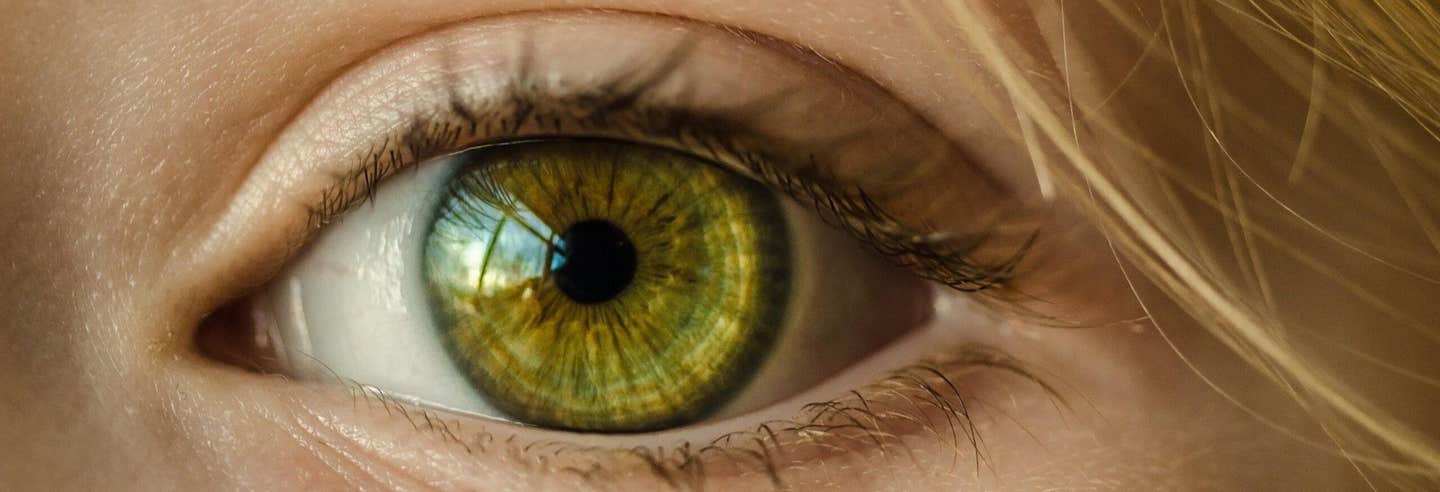Gene therapy breakthrough in the fight against hereditary diseases
Researchers have embarked on a mission to address the plight of those afflicted with DOOR syndrome and similar rare diseases.

[Nov. 25, 2023: JJ Shavit, The Brighter Side of News]
Researchers have embarked on a mission to address the plight of those afflicted with DOOR syndrome and similar rare diseases. (CREDIT: Creative Commons)
In medical research, the spotlight often shines on diseases that affect a large portion of the population, such as cancer and heart disease. Thanks to decades of tireless research, treatment methods for these widespread ailments have seen tremendous advancements.
However, there exists a shadowy realm of diseases that afflict only a few individuals, quietly slipping under the radar of scientific inquiry. Among them are rare hereditary conditions like DOOR syndrome, a disorder that has garnered little attention but is now the focus of a dedicated team of scientists determined to change the course of these afflictions.
DOOR syndrome, an acronym for Deafness, Onychodystrophy (short or absent nails), Osteodystrophy (short fingers and toes), and developmental delay and intellectual disability, is a congenital disorder characterized by multiple abnormalities. It is an exceedingly rare condition, hereditary in nature, and is primarily identified in Canada and the Middle East. What sets DOOR syndrome apart is the lack of a specific protein called OXR1 (OXidation Resistance gene 1) in the genes of affected individuals, leading to profound consequences within the brain.
Related Stories
Professor Magnar Bjørås, a distinguished scientist at the Norwegian University of Science and Technology's (NTNU) Department of Clinical and Molecular Medicine, has embarked on a mission to address the plight of those afflicted with DOOR syndrome and similar rare diseases. Prof. Bjørås, at the helm of a dedicated research team operating jointly with Oslo University Hospital, is committed to unraveling the mysteries of these hereditary conditions and ultimately devising innovative therapies.
The primary challenge posed by DOOR syndrome is the inability of brain cells to develop properly due to the absence of the OXR1 protein. As a result, these critical cells either become dysfunctional or succumb to cell death.
In an effort to combat this debilitating condition, Prof. Bjørås and his team have ventured into the realm of growing miniature organs in their laboratory, including mini-brains, mini-lungs, and mini-eyes. These mini-organs serve as invaluable platforms for testing various drug therapies and exploring the potential of gene therapy.
Researchers create mini-brains from skin cells in the lab. The mini-brains are used to test out medicines and gene therapy. The work has provided new knowledge and ideas for the treatment of patients with childhood dementia, Alzheimer's, ALS, Parkinson's and DOOR syndrome. (CREDIT: Julie Gloppe Solem, NTNU)
To initiate their research on DOOR syndrome, the team required a source of cells from individuals afflicted with the condition. Fortunately, a few cases had been documented in Canada and the Middle East, and the Norwegian scientists obtained skin cells from these patients to fuel their groundbreaking work. In the laboratory, they employed a remarkable transformation process that converted skin cells into embryo cells, effectively rewinding their developmental state to resemble the initial cells that form in humans. Using these reprogrammed stem cells, they succeeded in cultivating mini-brains that accurately replicated the disease, providing a crucial testing ground for potential therapies.
The development of these mini-brains is an intricate and time-consuming process, demanding both patience and financial resources. Nevertheless, the endeavor has granted the research team profound insights into the mechanisms underlying the disease's progression and, most importantly, offered innovative treatment avenues. Among these promising approaches, gene therapy stands out as a potential game-changer. By harnessing the power of a harmless virus as a delivery vehicle, the researchers aim to instruct brain cells to begin producing the missing OXR1 protein.
Professor Magnar Bjørås at the Department of Clinical and Molecular Medicine. (CREDIT: Geir Mogen, NTNU)
Prof. Bjørås elucidated this groundbreaking method: "We create a harmless virus in the lab and then put a healthy OXR1 gene into the virus’ genome, and this gene has the ability to produce the protein that brain cells lack in people with DOOR syndrome."
Subsequently, this virus is introduced into the mini-brains, where it is absorbed by brain cells. Once inside, the gene within the virus begins the crucial task of producing the missing protein. If this production can be enhanced, it holds the potential to halt, and ideally, reverse the progression of the disease. However, to effectively combat DOOR syndrome, patients must undergo gene therapy at an early stage, ideally as soon as initial symptoms become evident.
DOORS syndrome is a disorder involving multiple abnormalities that are present from birth (congenital). "DOORS" is an abbreviation for the major features of the disorder including deafness; short or absent nails (onychodystrophy); short fingers and toes (osteodystrophy); developmental delay and intellectual disability (previously called mental retardation); and seizures. Some people with DOORS syndrome do not have all of these features. (CREDIT: Medline Plus)
The field of gene therapy has evolved dramatically over the past two decades. In 2007, only one clinical trial of gene therapy was recorded, but today, thousands of clinical trials involving gene therapy are underway, reflecting the remarkable progress made in this transformative area of medical science.
What distinguishes the OXR1 protein, absent in DOOR syndrome patients, is its intriguing potential for treating a spectrum of other diseases. Notably, this protein plays a crucial role in reducing inflammation, a hallmark of many degenerative brain disorders, including childhood dementia, Alzheimer's, ALS, and Parkinson's. Thus, the pioneering gene therapy approach developed by Prof. Bjørås and his team has the potential to pave the way for treatments in these related conditions.
Physical features of participants with TBC1D24 mutations. (CREDIT: Science Direct)
The research conducted by these dedicated scientists extends beyond DOOR syndrome and its immediate implications. Their utilization of cutting-edge technology has led to the creation of mini-brains derived from both DOOR syndrome patients and healthy individuals. These miniature organs have served as invaluable models for studying brain development and have allowed the researchers to delve into the intricacies of different brain regions controlling functions such as memory, learning, motor skills, fluid balance, hormone regulation, and temperature control.
Perhaps the most groundbreaking revelation from this research is the discovery that OXR1 promotes protein methylation during brain development, both in terms of spatial and temporal aspects. Protein methylation is one of the critical chemical processes governing gene expression, and understanding its role in the context of OXR1 deficiency could hold the key to addressing not only DOOR syndrome but also a broader spectrum of neurological disorders.
As we witness the evolution of gene therapy and the profound insights derived from mini-organ research, we stand on the precipice of transformative advancements in the field of rare disease treatment, holding the promise of improved lives for countless individuals around the world.
Note: Materials provided above by The Brighter Side of News. Content may be edited for style and length.
Like these kind of feel good stories? Get the Brighter Side of News' newsletter.



